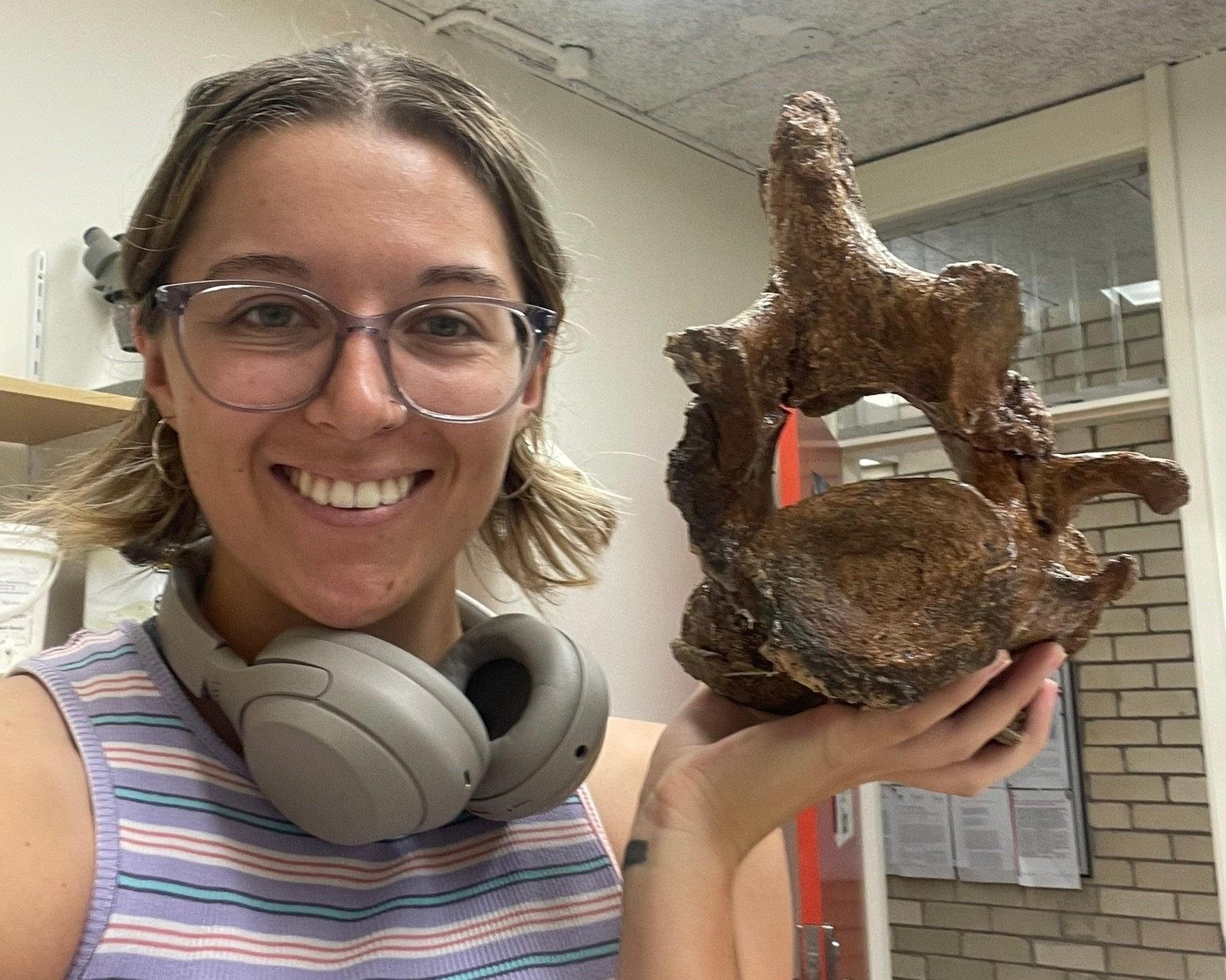Fossil Prep with UNE
In February 2024, I was able to spend two weeks working with the crew from the Palaeoscience Research Centre at the University of New England in Armidale. Having been on numerous digs where we collected dinosaur bones, this trip was about learning the next steps palaeontologists take in the lab to get the bones out of the plaster ‘jackets’ that we use to transport the fossils from the place we dig them up, to the university or museum where they will later be studied.
It was great to excavate some of the jackets we had originally brought back from Lightning Ridge in November 2023, and I had great fun working on the axis bone (second neck vertebra) of a Diprotodon - an extinct wombat that was about the size of a car!
While learning how to use tools like the microjacks and airscribes (a vibrating needle with an airbrush) was a major part of the week, I also got to help other students process their own fossils - from sieving through sediment from Surat, QLD, looking for sharks teeth, to looking for micro-fossils under a lens to sort different shapes and organisms from some of the earliest fossils we have in the world! These fossils from the Flinders-Ikara Ranges in SA were collected in 2021, on another expedition I was part of!
A final highlight was the opportunity to start prep on a temnospondyl jaw bone from Tasmania - these triassic fossils had been tucked away in a drawer in a Tasmanian museum for years and this was the first time someone was working on uncovering more of the fossil underneath the stone (no pressure).

